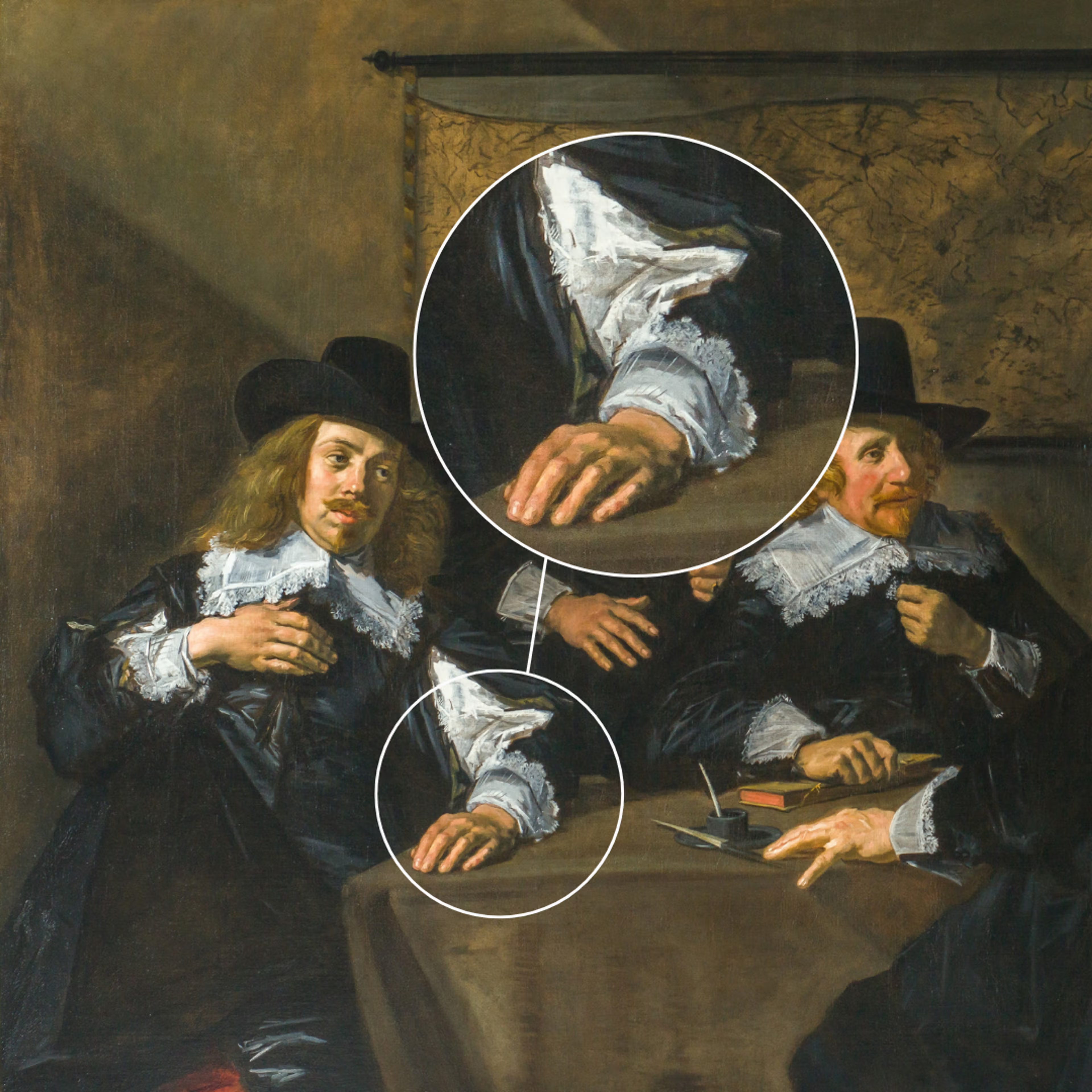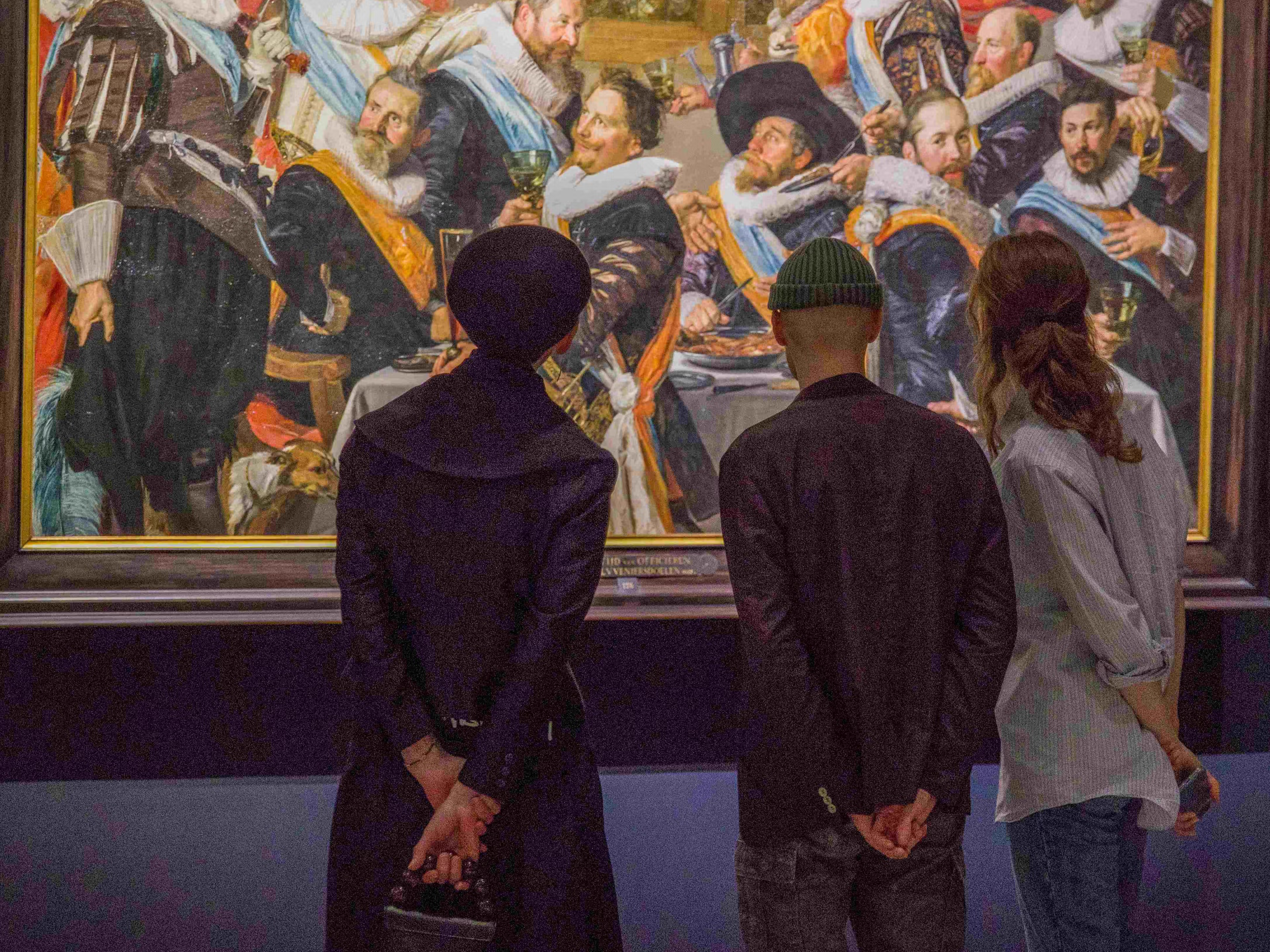
About Frans Hals
Who was the 17th-century painter Frans Hals?
The largest collection of Frans Hals paintings
Frans Hals is one of the best-known and most innovative 17th-century Dutch painters. Frans Hals was an innovator and had an exceptional eye for capturing people. He was the master of loose brushwork, which gives his portraits movement and brings his subjects to life. The Frans Hals Museum has the largest collection of his works in the world including 5 civic guard portraits.

From Antwerp to Haarlem
Frans Hals was born around 1583 in Antwerp. When he was an infant, his family moved to Haarlem, where he later trained as a painter. In 1610, he started his painting career by becoming a member of the Haarlem Guild of Saint Luke, a professional association for artists. He remained in Haarlem his whole life, married twice and had 14 children.

Loose brushwork
Frans Hals developed a unique style of painting with lively brush strokes that you can clearly see on the canvas. This style was very popular and so he was inundated with orders to paint portraits of rich brewers, merchants and the like. He also painted three impressive group portraits of regents and regentesses of care institutions in Haarlem. Nobody produced more civic guard portraits than him: five monumental group portraits of civic guard militia from Haarlem. In this sleeve, you can easily recognise Frans Hals's loose brushstrokes.
Frans Hals painted everyone
Frans Hals painted people from all levels of society, including stage actors and fishermen’s children. They often had big smiles on their faces. Laughing with your mouth open was considered bad manners in Frans Hals’s day. That’s why rich people were always portrayed with a straight face. Children from impoverished backgrounds, however, didn’t know better, so it was thought. They could be portrayed laughing out loud. Frans Hals must have realised that his signature brush strokes were perfect for these types of paintings. They were called tronies (meaning facial expressions) and were very popular at the time. Frans Hals probably expected to make money with these. While he produced commissioned portraits, paintings like the ones described here were intended for sale on the open market.
Old Men's Alm House
Frans Hals was paid well for his work, but he still often found himself in debt. He had many smaller debts with bakers, butchers and other shopkeepers. He apparently often lived on credit and didn’t pay his bills on time. Though he usually paid off his debts in the end. But sometimes a notary had to be called in, as the archives show. It’s odd he had any debts at all: he must have earned good money from his art.
During the last years of his life, he received financial support from the city in the form of a pension. This is quite remarkable and it shows how important the painter was to Haarlem. And even during that time he received commissions for large paintings. When he was 80, he painted two group portraits of the regents and regentesses of the Old Men’s Alms House. These paintings are housed in the Frans Hals Museum. Frans Hals died in 1666 at over 83 years old.

Frans Hals and modern artists
In the late 19th century, painters such as Manet, Monet and Van Gogh became fascinated with the loose brushwork of Frans Hals. They came to Haarlem to admire his paintings. To this day, his loose brush strokes are an inspiration to visitors and artists alike.
‘What a pleasure to see a work by Frans Hals, so different from paintings where everything is carefully smoothed out.’
Vincent van Gogh was also an admirer of Frans Hals.
